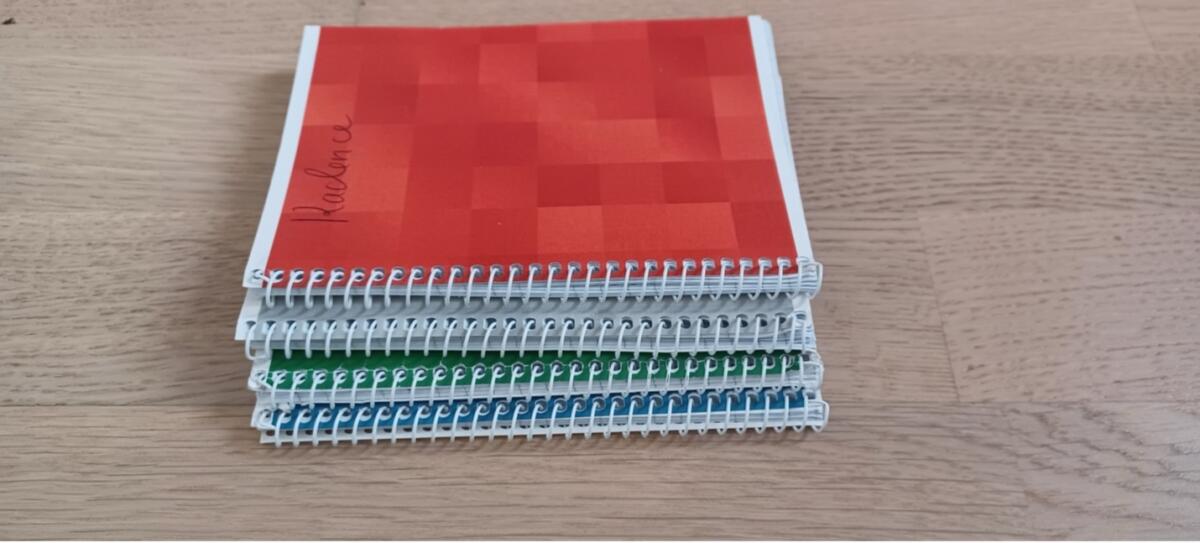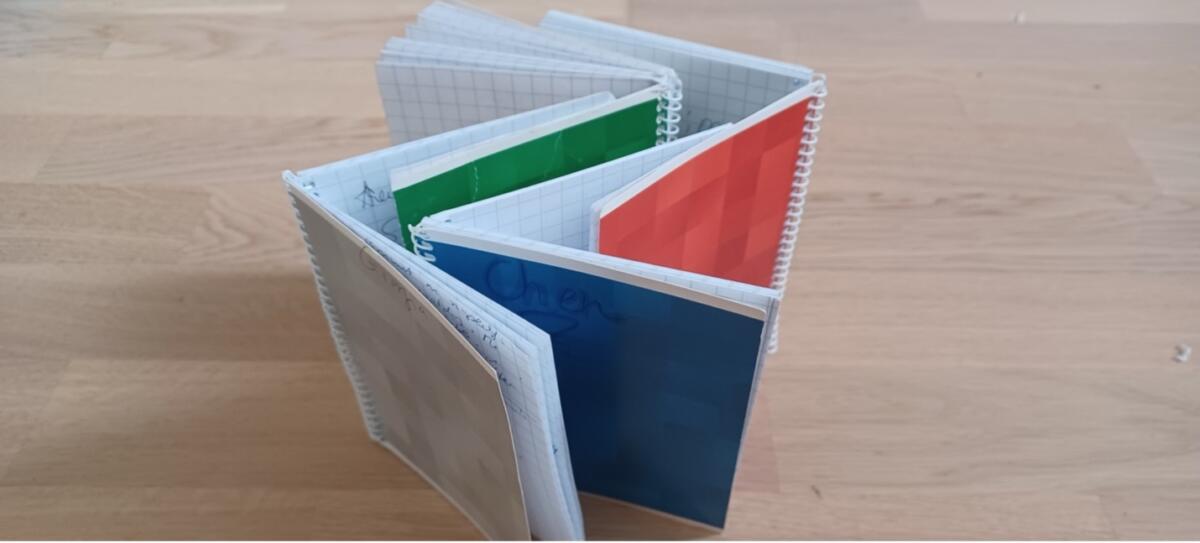Brief note on supervising artistic and written graduation processes
Lecturer in Choreography Jana Unmüßig writes about the supervision processes of the MA Choreography graduation processes (written and artistic component) this semester.

In the MA Choreography programme, each student works with the support of a supervisor or supervisor team for the completion of the artistic and written component of their MA thesis. For the current cohort, I was supervising the artistic and written components of Giorgia Lolli and Kadence Neill. In addition, I supervised the written components of Chen Nadler and Avgoustina Triarou.
Supervising I engage in infinite questions on how art emerges, and I learn again and again how artists test one way or another the boundaries of art. Whether it is with respect to the phenomenon of art as in art history, whether it is with respect to other artists, or whether it is a stretching of the inner boundary of the artist as a person. Accompanying such a boundary testing process requires me, as supervisor, a certain kind of steadiness that entails creating a sense of safety while also, at times, being direct and almost confrontational. Confrontational is hereby meant as the moment where I, as supervisor, communicate a boundary towards the student and their work. I signal a halt, initiate a caesura so that the student can ponder on their inclinations and choices. Questions I ask often at the start of a supervision meeting: How are you doing? How is it going? They are purposely kept generic. Generic questions are meaningful entrances into thicker layers of thoughts-feelings-accounts because genericity creates a sense of sharable experiences. A generic question communicates implicitly, that you’re not alone in this. Which is, to me, a good start to the supervision process.
This short blog entry is a series of snippets that I, as a supervisor, retain from each supervision process. Due to the different extent to which I was supervising each student, the following short snippets about each student’s process and final works are of different lengths.

Supervising Giorgia’s and Kadence’s written and artistic components
Giorgia was the first one to launch the making of her graduation work when starting a few days after the Christmas break. Giorgia had been basically studying only remotely the semester before her graduation work because of extensive making and touring for her freelance work. Also, she had only a three-week studio-based process in which she had set herself the task of working with a cast of 2 Italian and 3 Finnish dancers. She had worked with the dancers before, but the five dancers had never worked together or even met each other. I still have much respect for Giorgia’s bravery – to throw herself into the unknown like this. While also dealing with complicated phenomena such as ballet and gender. The result was this could be us, where ballet is rather material than the discipline’s exercise of pre-defined language and vocabulary, a kind of “re-semantisation” of Ballet as Giorgia ponders on in a presentation she gave few months after the show. Re-semantisation as a search for meaning making through Ballet to understand what stories can be told, what phenomena can be discussed. For instance, the phenomenon of womanhood and its constructed and performative nature. The dramaturgy of the work, developed in close collaboration with the whole working group, resulted in a particularly strong interdisciplinary dialogue between sound, light and choreography. These three artistic fields were interwoven with the dancing in a way that a unique sense of cohesion and composition, expressed via an idiosyncratic rhythm, emerged.
My tag words for this could be us: walls in rainbow colors, open space, popcorn, memes, two bodies in one tutu
Kadence also started in January. A bit after Giorgia. But Kadence had decided first to write and then go into the studio. She had chosen a medieval framework through which she wanted to address choreographic composition. Already in the summer of 2024, she had told me about a mystic from the 13th century and the first female author writing in English, Julian of Norwich, and Norwich’s “11 Revelations of Divine Love”. Kadence interweaves the writing with a maze of references from contemporary Western choreography discourse and art history to distill her idea of “choreography as an excuse to gather”. Kadence wrote the written component as if she had made a stage work. Same devotion, same search, infinite attention to detail. After a long writing process of around four months, where she balanced the lonely work of the writer – discussing with oneself, references, and occasionally some humans (for instance, her supervisor) – she transitioned into a collaborative process with a working group of 13 people. That was a leap, and it was wonderful to see how Kadence managed the transition from table work to studio space. The stage work REV DIV LUV was developed in close dialogue with the written component, sourcing the rehearsal process through and with the written component. The final show, REV DIV LUV, a visually and viscerally strong show, displays Kadence’s particular directorship that allowed each performer to have their moment to shine.
My tag words for REV DIV LUV: cellar party, fake blood, dance cultures, red angel wings, openness

Supervising Chen’s and Avgoustina’s written components
Chen started working on the written component sometime in January. Chen, like Kadence, reversed the usual order – first making, then reflecting – and began with the writing process. I have a deep respect that she took that path since Chen is a dance artist who starts creation processes on the floor in the studio, and not by first writing over 60 pages. Also, she performed in Avgoustina’s artistic component, which led to needing to negotiate some part of the writing process with her process as a dancer in Avgoustina’s. But Chen took it all on and wrote and thought with a myriad of contexts (from Steiner education (which Chen has a first degree in) to sociology/mobility studies, to ethics of Levinas and traces according to Derrida, Bourriaud’s relational aesthetics, and theater studies of Erika Fischer-Lichte) to think a particular movement practice that she calls “Visiting Practice”. Central means of implementing the “Visiting Practice” are repetition in its transformative capacity, traces, and the gaze. Chen’s desire to pull the writing – although written before the rehearsal practice – near the production of her thesis work THE FEAST, also shows through her last chapter where she talks the reader through some key vectors of the actual making process.
My tag words for THE FEAST: grapes, water, choreographic dispersion, dancerly knowledge, hospitality
Avgoustina had the most compressed time for writing. And threw herself into the writing process with all force, which resulted in a complex reflection on TREBUCHET which premiered at the beginning of February. Avgoustina wanted to, from the start of the writing process, focus on understanding more about the way of working she implemented in TREBUCHET. In her writing, she centers the body and body practices, embodied thinking, dives into discourses on perception and keeps reminding the reader how, for her, process, research and performance are one. Avgoustina gives generous insight into her work as director during the rehearsal process and details with great precision the tasks that laid the foundation for TREBUCHET as body practice. In her writing, she discusses on many occasions with artist and researcher Diego Agulló’s writings that were also a strong reference for the artistic component. This and the other reference of choreographer and researcher Emilyn Claid reflect Avgoustina’s incentive of the written component, where theory and practice are not divided but tightly interwoven.
My tag words for TREBUCHET: polyrhythmic, embodied thinking, corporeal knowledge, multidirectional, aisthetic

Written by Jana Unmüßig
Koreoblogi
Koreografian koulutusohjelman blogi on keskustelun ja jakamisen paikka. Täällä koulutusohjelman opiskelijat, henkilökunta ja vierailijat kirjoittavat koreografiasta, opiskelusta, meneillään olevista projekteista, (tanssi)taiteesta ja sen ympäriltä.
Uusimmat julkaisut
Seuraa blogia